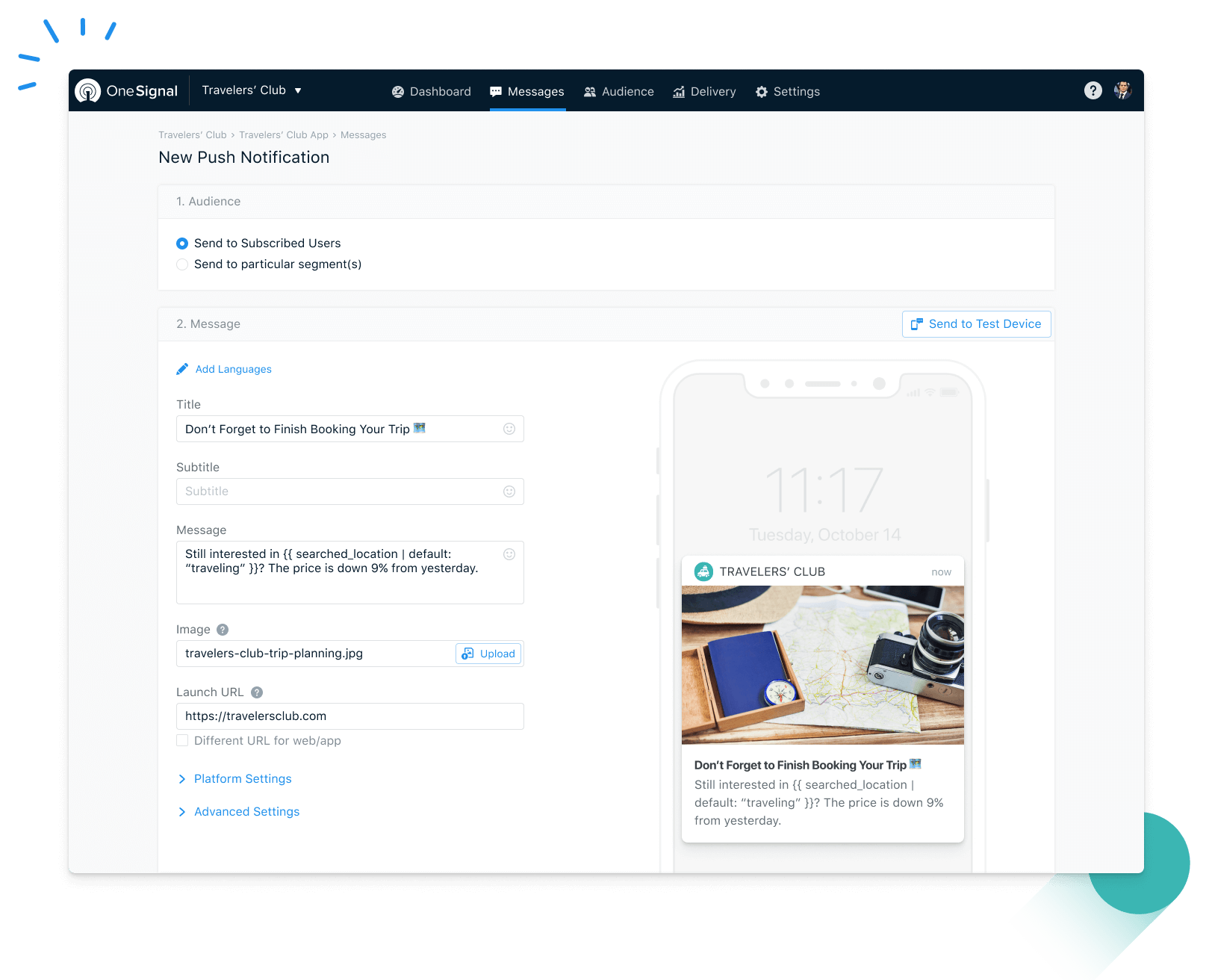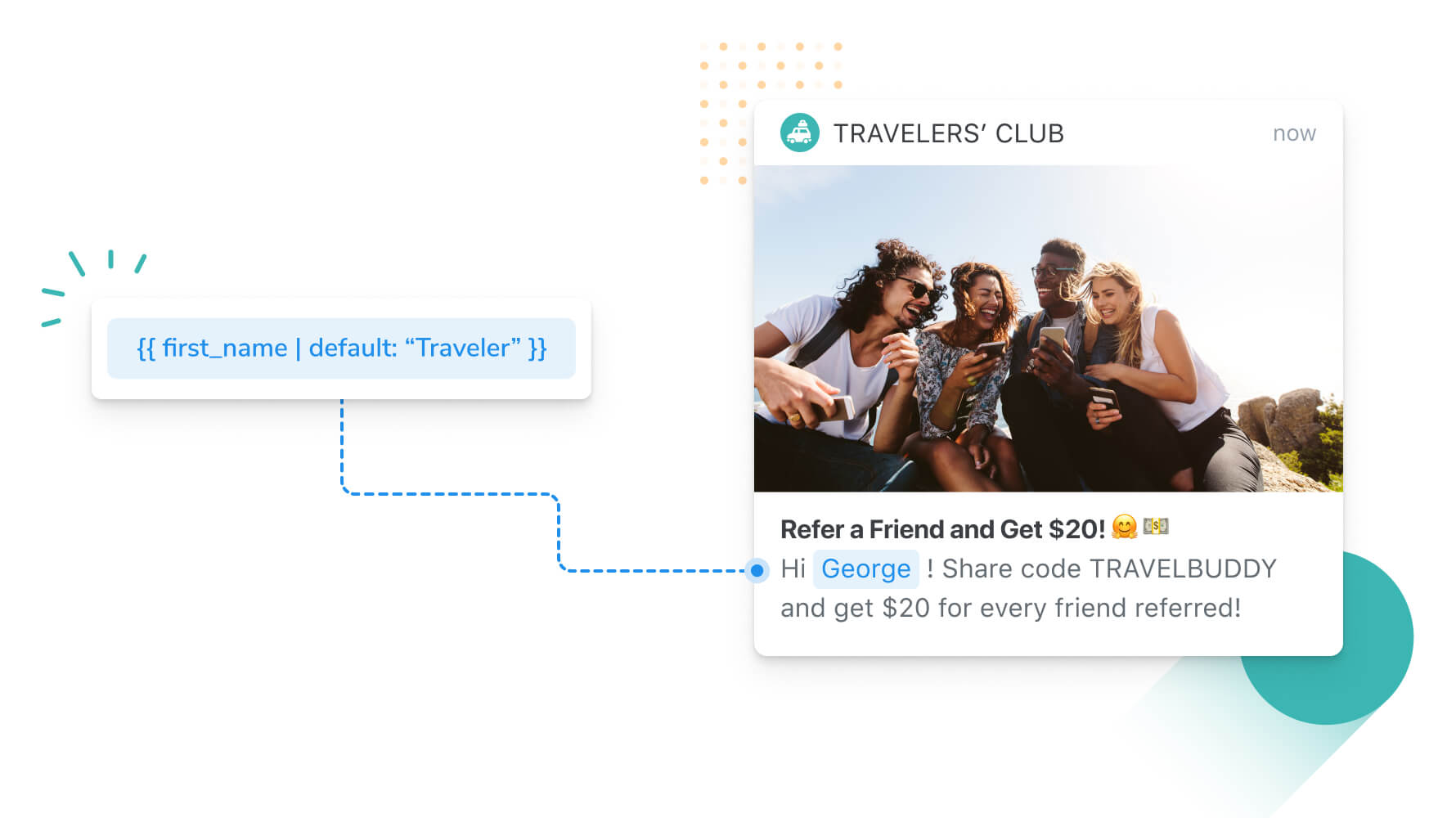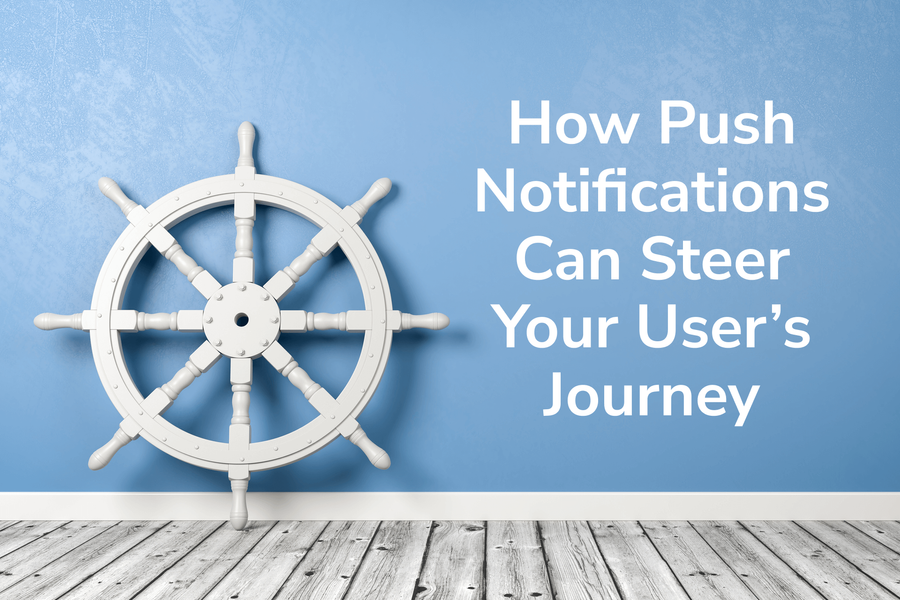When you wake up in the morning, it’s likely that the first thing you do is tap on your phone screen and read through the cache of push alerts you missed while you were sleeping. Throughout your day, mobile notifications keep pace with your busy schedule through calendar apps nudging you into meetings or reminding you of birthdays, news apps sending you breaking news alerts, and Amazon reminding you to complete that purchase you started. Our phone screens are a key channel through which we engage with our communities, stay on top of our personal and professional responsibilities, and stay informed.
If you’re on the other side of the screen and someone has downloaded your app, congratulations! If you’ve persuaded users to opt in to receiving push notifications, even better! Now you need to develop a strategy to further your app’s goals of progressing your users through the desired customer journey, while also protecting that coveted new real estate on their phone screens. How? Send relevant, valuable, and seamless messages that are personalized to each customer.
Step 1. Clearly define the milestones of your customer lifecycle
What are the key milestones that you want users to achieve in your product? How long do you think it should take between milestones? A flight booking application might look for: Flight searched → Flight price alert set (same day) → Flight booked (within 6 days) → Flight information shared (within 3 days).
For a gaming app, milestones might be less linear and more aligned to key usage indicators like username created, level 5 achieved, over 3+ hours of play total, or coins purchased.
Once you have an understanding of your milestones, map out the messaging to help nudge users from milestone to milestone. Consider your user’s perspective and timeline as well as your product goals. If they’ve just booked a flight today, it may be too soon to push them to book another. However, if you’re a gaming app and your user just reached a milestone like level 5, it may be the perfect time to encourage them to stock up on coins to unlock additional functionality to get them to level 6.

The timing between your milestones will likely vary, with some clustered at a similar time and some spread out. You might want to cross-sell a user on a new product around the same time you want to incentivize them with a discount to invite a friend. These events do not have to be linear as long as you’re monitoring the cadence of each to ensure you are being cognizant of the user’s journey and appetite for messaging.
Your customer journey may also vary from user to user. For example, some people may search and plan for months before booking their vacation, while others know exactly what date and time they want to fly and just need to ensure the right price point. Some users might travel solo and see no need to add users to their itinerary. This could lead to different sets of milestones that are triggered and even potentially overlap. As long as you’re respectful of the number and frequency of notifications for simultaneous milestones, it can be helpful to work towards different goals at the same time, or skip some goals based on user preferences and behavior.
Step 2. Develop user-focused content that will add clear value to the user experience
The most successful apps tailor their lifecycle marketing strategy to communicate defensible value to their user base in every single message. While the ultimate goal may be achieving the lifecycle milestones and conversions you’ve mapped, the way to get there is through user-focused content. Batch and blast messaging can have short term gains, but it often drives long term losses through unsubscribes and/or removal of push permissions. To focus on messaging that drives specific value for your users, consider a few cases:
- Sharing information that helps improve their day or their life, even if there’s no specific milestone or action attached
- Helping them feel educated, informed and up to date topics relevant to your app
- Clearly communicating new products, features, or important changes to ensure a seamless experience while they’re using your app
- Conveying your company’s value prop as it relates to that specific user
- Sharing special events or relevant, targeted discounts
- Helping your users save time or use your app more effectively
- Providing news, tips, tricks or other insights to help them feel like an insider or achieve their goals (and potentially your mapped milestones) faster and easier
Sometimes this can just be a difference in positioning and wording. Instead of just thinking about your goal, get clear on the value prop for your users and make sure your messaging reflects that. That can be the difference between “Come back and complete your purchase!” and: “Still interested in traveling to {{searched location}}? The price is down 9% from yesterday.”
This personalization and focus on driving value for the user is an obvious and effective way to ensure your messaging is user-focused.

You can also customize the different milestones you set for a user. You might have a milestone that incentivizes your user to invite a friend to the app. If your user completes that milestone five times, you can tag that activity to indicate that user may be a potential ambassador to promote your brand. You can then create a different milestone for that user to share an invite link on a social media channel for further incentives. It might be beneficial to wait or skip this milestone for someone who was not as willing to invite a friend to the app, or has only done so once.

A user-focused mindset paired with a clear view of your lifecycle milestones and goals will help keep messaging relevant, engaging, and personalized at scale.
Step 3. Ensure your desired actions are easy, clear and frictionless for the user
So you’ve made a compelling, milestone-appropriate message for your user to engage with. If you’ve done it well, they’ll tap to open your app — then what?
Make it as easy as possible to take the action you advertised that they’ve shown interest in taking. If your push notification was encouraging booking a car rental for a 15% discount after booking a trip, make sure that message is linked directly to the corresponding page in-app or the external car booking website instead of the home screen. You can take this assistance to the next level if you can link to a page with the specific date and airport details filled out!
If you have the resources to do so, partnering messaging with UI changes can sometimes be an effective way to steer users towards important, early milestones. For instance, greying out the appearance and disabling the functionality of features that might need you to log in, buy a membership, or maybe add a credit card in order to unlock that feature. This can gamify an important milestone by demonstrating to a user what they are missing out on without this action. By directing their actions and clarifying their path, you ensure a smooth post-click experience that will help prevent subscriber churn and increase conversion rates.
Another helpful way to steer the user’s journey is to collapse push notifications to ensure only the most relevant and up to date information is surfaced to the user. If you wanted to send flight information to users the day of their planned trip, you would want to categorize those updates together so that outdated information would not be the most prominent message. If you send reminders the day of the trip for packing last minute items in the morning, 2 hours before take-off, and then 30 minutes before take-off, it would be important to suppress the previous messages as they would become increasingly irrelevant throughout the day. If they are only noticing and dismissing notifications 30 minutes before a trip, the time for packing has certainly passed.
Centering your mobile communications around an empathetic understanding of your user’s device and your app’s place on it is key. To engage your users on a personal level, continue to pay close attention to what they have done in your app, what they should do next to achieve more value, and how to make their journey to those future milestones as seamless as possible.




